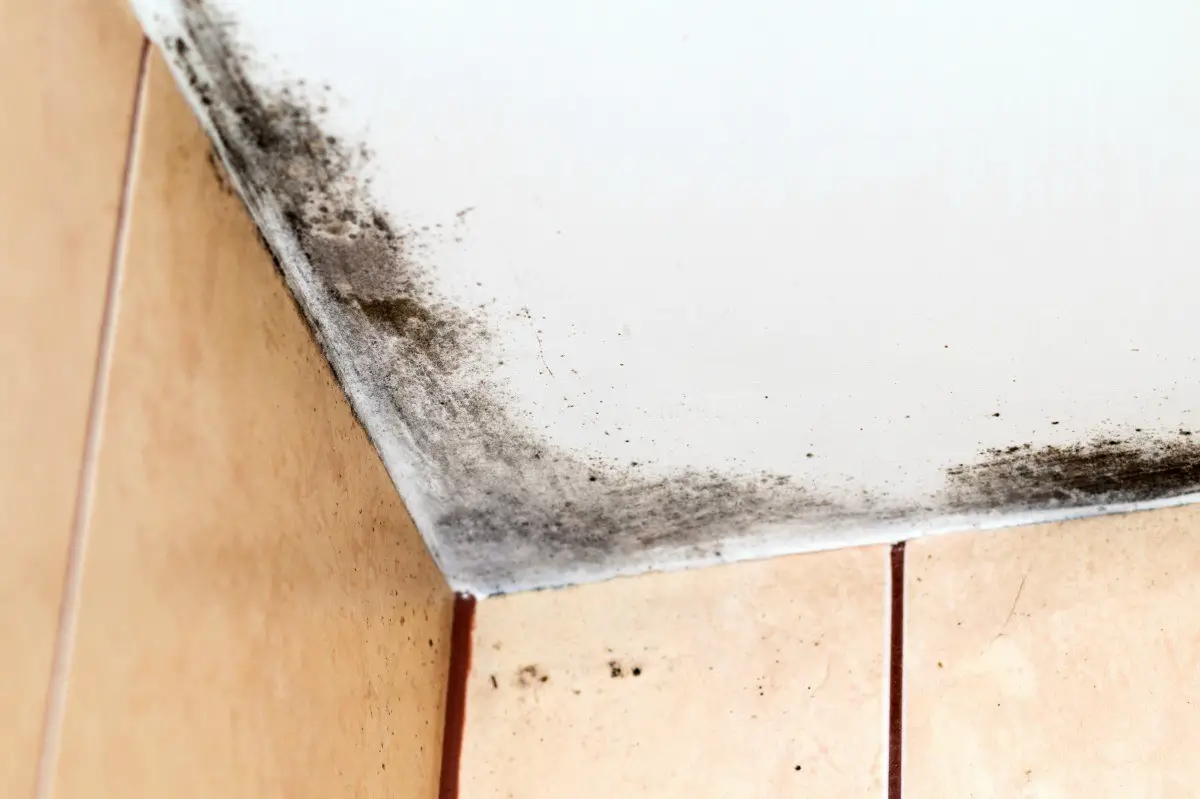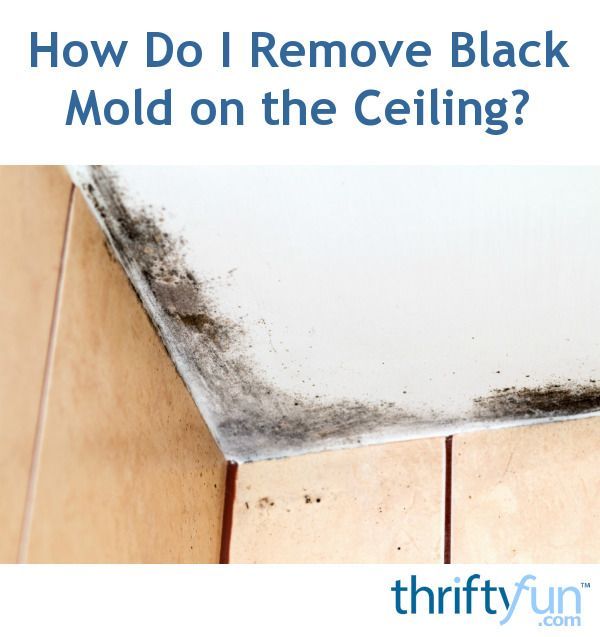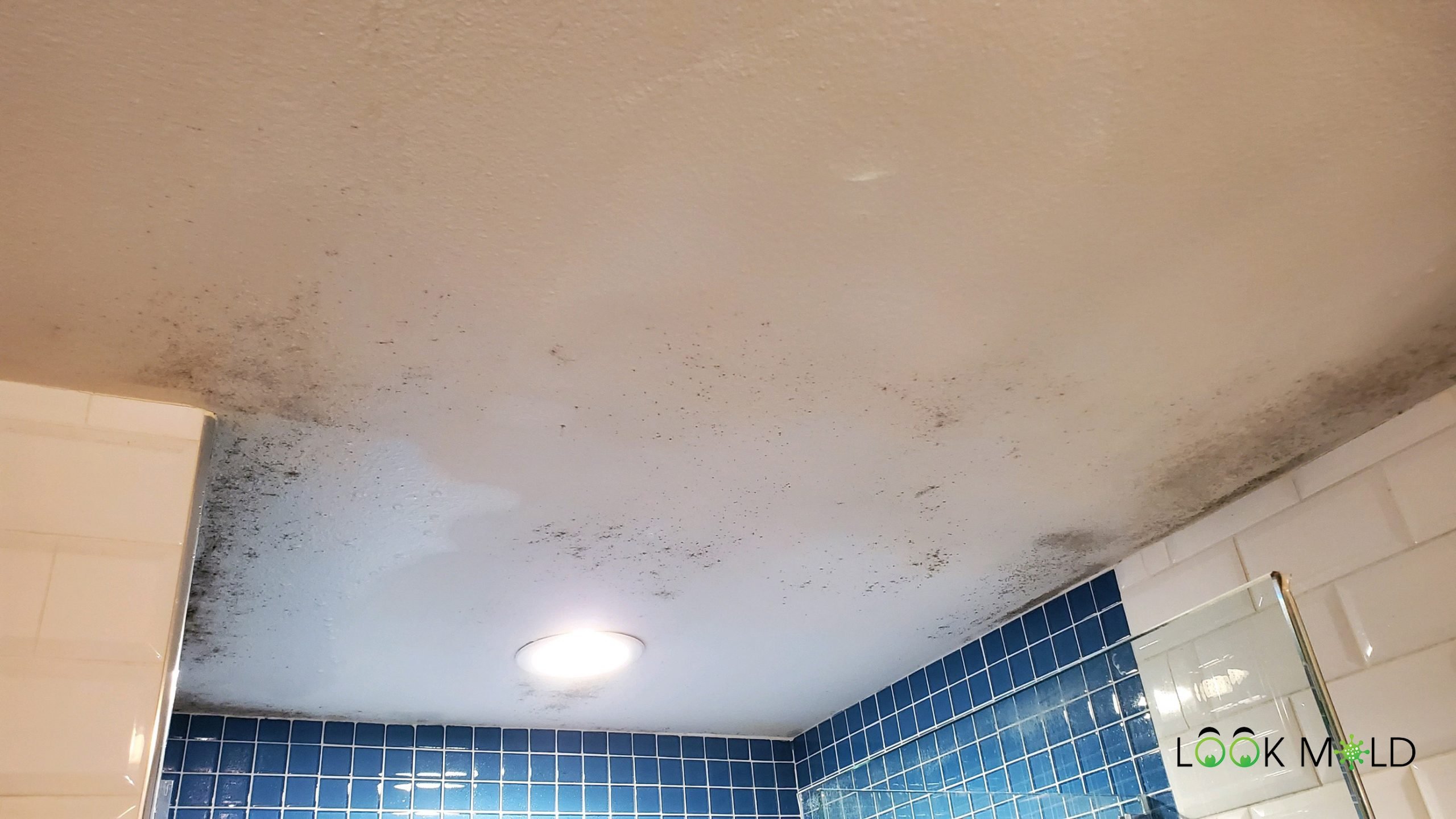Mold Removal From Fabric
Its easier than you might think for clothes to attract mold and mildew. A forgotten load of laundry in the washing machine, the pile of clothes at the bottom of a closet, or even the armchair in a humid room can all quickly become overrun with mold. However as long as you catch the problem early, your fabrics can still be saved.
Bleachable fabrics
If you can apply bleach to a fabric without worrying about discoloration, do it. Thats the fastest and most effective way of getting rid of mold. Many laundry bleaches can be used on white and colorfast fabrics, although you should always check the instructions, and never use bleach on wool or silk. Simply apply a solution of one part bleach to three parts water and let it absorb into the fabric for a few minutes before laundering as usual.
Non-bleachable fabrics
For fabrics that cant be bleached, use white vinegar instead. Either apply white vinegar to a cotton pad and place it on top of the stain for five minutes before laundering, or briefly soak in a solution of ¼ cup vinegar to one gallon water. Rinse through to remove the vinegar and launder as normal.
Upholstery
Related: All about cleaning fabrics
Beneath The Bathroom Sink
Mold growth can occur under a bathroom sink in 3 common scenarios. First, mold growth can appear after a leak from the water supply lines or the drain pipe. Typically a leak in the supply lines will cause mold growth and water damage to the bottom of the vanity/cabinet. A leak in the drain line is less common, but can occur in the cabinet or in the adjacent wall.
Second, mold can occur due to condensation. Typically this happens in a home with poorly or completely uninsulated exterior walls. These walls remain cool, while the interior of the home is heated. This temperature differential creates a surface below the dew point, and thus, condensation occurs. A moisture meter is helpful for differentiating condensation based mold growth from leaky plumbing. Except for extreme circumstances, the condensation based mold growth will not exhibit a measurable level of increased moisture in the wall. However, mold growth from a leaky pipe certainly will.
But looks can be deceiving. Damage from old leaks can leave stains that can appear actively wet. In the image below a moisture meter shows the moisture content of the cabinet is normal.
Notice the damage to the plywood beneath the countertop.
Why Does Mold Grow On My Bathroom Ceiling
Bathrooms are excellent places to grow some of your homes worst enemies: mold and mildew. Excess moisture in your bathroom causes mold and mildew to grow. Mold and mildew only need oxygen, a food source, and moisture to grow. Mold and mildew can damage the fixtures of the bathroom such as the drywall, trim, paint, doors, ceilings, and more because for the mold and mildew, these fixtures are a food source.
Most building codes now require a fan in every bathroom. Why? Because fans help ventilate the room, remove bad smells, and remove moisture. The most important function of the fan being to remove moisture. Even if the bathroom has a window, a fan is the best way to prevent moisture buildup.
Keeping your bathroom dry, well ventilated, and consistently using an exhaust fan is critical to preventing mold and mildew growth.
To learn more check out our post: Bathroom Exhaust Fans All You Need To Know to learn all the details, and to determine how to choose the best fan for your bathroom.
Don’t Miss: Can You Kill Mold With Uv Light
How To Prevent Black Mold In Bathroom Ceiling
There are a couple of ways to prevent the black mold growth on your bathroom ceiling. Check these following steps out:
The black mold in bathroom ceiling might affect your health and ruin the rooms interior design. Hence, recognizing the mold, getting rid of it quickly, and preventing its growth are indeed best things to do.
After You Clean The Mold

It is important to realize that the fact that your ceiling looks clean after you clean it doesn’t mean that lingering mold spores won’t survive. You will need to treat the ceiling after you have cleaned it and take steps to correct the problems in your bathroom that contributed to mold growth in the first place.
You May Like: How To Get Mold Off Shower Grout
What Is Black Mold
Black mold, known asStachybotrys Chartarum, is a common type of indoor mold. A black mold can appear in black or dark green. Not only black mold can be easily seen, but it has also a distinct smell, a musty smell.
Just like other types of mold, it releases mold spores that can enter your house through the air and spread quickly in your entire home. These spores outside of the house can also attach to peoples clothing, shoes, bags, and even to animals. They can be a good vehicle for mold to enter your home.
When mold spores drop in damp areas or areas that have excessive moisture, they will start to grow and digest whatever nutrients are present to survive. Then, this will begin destroying things and causing serious property damage.
Hang Up Towels In Another Room
It is another simple trick to reduce growth mold on the bathroom ceiling.
Wet towels can improve the humidity of a room. And be sure to hang your towel in another room to allow it to dry well. So do this to keep the moisture to a minimum, reducing the conditions for mold growth.
If you have a mold growth problem, avoid drying indoors on shelves or chairs. Excess moisture from drying clothes can encourage more mold growth.
Recommended Reading: How To Prevent Mildew On Boat Seats
How To Clean Popcorn Ceiling Mold In The Bathroom
First step Dont panic!
While finding mildew in any part of your home can be greatly distressing, there are specific steps you can take to remedy the problem. When in doubt, you can always seek guidance from professionals in the field, like us.
If youre feeling brave enough to tackle it on your own, here is the essential guide to removing mold from the popcorn ceiling in your bathroom.
Today When My Kid Was Playing With A Balloon It Hit The Living Room Ceiling And Curiously I Went Near To Check What Is Going On In Ceiling A Less Than 1cm Of The Ceiling Fell And It Was Very Soft I Felt Surrounding Felt One More Place Soft As Well Due To Wet I Don’t See Any Ceiling Texture Change Or Smell As Well Exact Above This Location There Is A Toilet But Didn’t Notice Any Leaks In The Toilet Please Guide What It Would Be
I recommend renting or buying a moisture meter. This is the only way to conclusively determine if you have a leak. Based on the location of the mold/wet spot, you likely have a very slight leak from the toilet seal. This is quite common. Due to the limited size of the damage, I would not recommend removing the ceiling. Instead, replace the toilet seal and monitor for future leaks.
Read Also: What Causes Mold On Ceilings
Mould Removal Using Bleach
Bleach is perhaps the best option for the removal of mould. Not only is it a good cleaning agent, but it also kills the mould and bacteria, sanitising the walls and ceilings to prevent mould from returning. Heres what youll need when using bleach to clean your walls and ceilings:
- Gloves
- Ladder
- Mask or scarf
Step One: Put on the gloves, cover your nose and mouth with a mask or scarf and make a solution of one part bleach and ten parts water in your bucket. The gloves serve as protection for your skin as excess contact with bleach can cause skin irritation or burning, while the scarf will prevent you from inhaling the harsh fumes produced by bleach. Its also a good idea to keep all the windows open for maximum ventilation.
Step Two: Dip one end of the cloth into the solution and squeeze it gently to remove some of the water. Get up on your ladder and start wiping away the mould from your walls and ceiling, re-dipping other ends of the cloth until you have removed all the mould. Avoid using too much force to ensure damage-free wall and ceiling cleaning. You can make a fresh solution if the water gets too dirty or simply use more cloths. For any hard to reach places or intricate areas, consider using an old toothbrush to clean.
Dangerous Trees You Should Never Plant In Your Yard
Some trees are more trouble than theyre worth. Before you head to a nursery, see our slideshow. Then, see even more trees readers hate.
So how do you know if you have a mold problem? Matt Cinelli, owner/operator of AERC Removals in North Attleboro, Mass., says, If you can see it or smell it, youve got it.
Recommended Reading: Mildew Bathroom Ceiling
How To Stop Mold On The Bathroom Ceiling Above The Shower
There will be mold on bathroom ceiling above shower if you have a poorly ventilated bathroom. Mildew build-up usually occurs at the perimeter of the bathroom. You can spot in ceiling corners and that would be an unappealing sight.
It grows rapidly because people dont clean affected areas properly. People usually clean the bathroom floor and wall tiles. They forget the ceiling and thats where mold grows rapidly.
You have to reach the bathroom ceiling above the shower to clean mold. Do not try to clean it in dry condition. It will drop over your head and it can cause allergies. Try the following tips to get rid of mold in bathroom ceiling:
- Get vinegar in a spray bottle and spray it over mold.
- Wait for 5-10 minutes until vinegar kills mold.
- Now use a brush or cloth to gently remove it.
- Rinse the affected area and let it dry.
You may spot stains where mold was growing. Clean it to make your bathroom look cleaner.
- Pour 1-cup bleach into a 1-gallon quantity of warm water.
- Blend both ingredients perfectly and then apply bleach over the stained area.
- Rub the stain in a circular motion to remove it completely.
- Now, soak another cloth in clean water and wipe the bleach.
Your bathroom should be well-ventilated first if you want to know how to prevent mold in bathroom ceiling above shower. Suppose there is no window in your bathroom, use room heater to keep it dry. Close all the water taps to prevent a damp and moist environment in the bathroom.
Gather Personal Protective Equipment

A key ingredient in many fungus-killing products is bleach. Because of that, youll want to collect protective gear such as gloves, goggles, and a face mask before getting started.
While it may seem a bit overboard, ensuring safety in the cleaning process is an investment in the health of you and your family.
You May Like: How To Remove Mold From Vinyl Seats
Common Solutions For Ceiling Mold Growth
- Run the exhaust fan for at least 30 minutes after a shower or bath.
- Paint the bathroom ceiling with a high sheen/gloss paint. Matte and other low sheen paints absorb much more moisture, which in turn leads to mold growth.
- Insulate the attic space above the bathroom to prevent excessively cold surfaces on the ceiling.
- Mold growth due to condensation can often indicate elevated mold spores throughout other areas of the homes. Mold testing can be a helpful technique for determining whether this has occurred.
Removing Mold From Different Rooms
Some rooms are more prone to mold than others. Bathrooms are notorious for mold growth because they harbor damp, humid environments that mold loves. Less frequented rooms such as basements and attics can also suffer from mold, which can go unchecked for a long time before being noticed. Heres how to prevent mold from taking hold in each room of your property.
Also Check: How To Clean Mold From Boat Seats
Basic Diy Mold Removal
If you notice mold on your bathroom ceiling, it is important to treat it as soon as possible. According to the Environmental Protection Agency, if the moldy area is less than 10 square feet, it can be a DIY project. Below are some steps to clean mold.
Dangers Of Black Mold And Mildew
People who are exposed to mold spores can have different symptoms, such as a stuffy nose, sneezing, wheezing, and itchy skin or eyes. Some could even have an intense reaction such as fever or difficulty breathing, especially if they have allergies to molds. Some people can develop asthma. People who have respiratory problems or weak immune systems can be at risk of mold infections.
According to the CDC, the molds themselves are not toxic or poisonous. Moreover, the hazards that are carried out by molds may produce mycotoxins that could be dangerous to people. There are reports, rare but possible, that these toxigenic molds can cause serious illnesses such as pulmonary hemorrhage or memory loss.
If you see any signs of bathroom mold, it is best to call in professionals. Other surfaces of your bathroom might also be affected, such as tile grout and ceiling drywall. Removing and replacing the affected area can be the best long-term solution.
Read Also: Best Cleaner For Mildew On Boat Seats
Can A Small Portable Oil Diffuser Be The Cause Of Mold In The Corner Of The Ceiling Above Location Of Diffuser
No, but the particulate released by the diffuser can certainly cause staining on the ceiling. As indoor air quality specialists, were a bit uncomfortable with diffusers . Youre pumping something unnatural into the air and subsequently breathing it. The oils themselves may be natural, but the inhalation of them is not. Use good judgement and dont overdo it.
Find Out The Root Cause
The bathroom is the most common place in your house for mold infestation. The dampness inside bathrooms creates an ideal environment for mold to reproduce. In most cases, lack of natural light and effective ventilation is the culprit responsible for mold. That said, there could be other factors at play.
A leaking roof can also be blamed for ceiling mold. If water continuously comes through the roof and falls on the ceiling, mold will appear sooner or later. Therefore, you have to take care of the roof leak before cleaning the mold from the ceiling. Otherwise, the mold will resurface soon.
Also, clean your bathroom vent fan or replace it for making sure the bathroom air remains fresh and devoid of excess humidity.
Also Check: How To Clean Mold From Boat Seats
Looking At Purchasing A Home That Has Mold On Ceilings And Floors Home Was Unoccupied Is Structural Integrity Likely Damaged
Mold itself is not likely to cause structural integrity losses, especially to larger lumber such as studs, joists, etc. However, the same moisture conditions that cause mold growth can eventually cause wood rot. In general, wood root requires higher levels of moisture over a much longer period of time. While mold can growth within days, rot typically requires months of saturation. I recommend verifying youre solely dealing with mold. If so, youll likely have sheetrock, insulation and flooring repairs, but the framing should be sound.
How To Remove Mold On Bathroom Popcorn Ceiling

Owning a home is a point of pride for many families.
But if youre a homeowner, you know all too well the massive investment upkeep requires. There are many factors that may contribute to that need for constant upkeep, and you may be surprised to learn that the popcorn ceiling is a big one.
Popcorn ceiling, also known as stucco or acoustic ceiling, was a popular choice for residential properties between the 1930s and 1990s, largely due to the convenience it provided homeowners. Popcorn ceiling is textured, which makes hiding repair work or any sort of damage much easier than non-textured finishes. The bumpy texture also provides some acoustic cushioning, which was an added bonus for growing families.
With its many benefits, the textured ceiling carries a few downsides. The major drawback? It is a prime surface for mold to grow.
If you have discovered mold on the popcorn ceiling in your homes bathroom, dont fret! With some intentional preparation and a bit of work, your home will be mold-free in no time.
Also Check: How To Install Vinyl Stair Nose Molding
Its Time To Remove The Stubborn Black Mold In Bathroom Ceiling
Possessing a bathroom with up-to-the-minute interior design could be a dream come true. However, the key factor in regard to the rooms durability is no other than the maintenance.
Any possible threats might take place. One of them is the black mold in bathroom ceiling. Without the proper handling, its existence would be something serious. As a result, your bathroom interior is less impressive.
